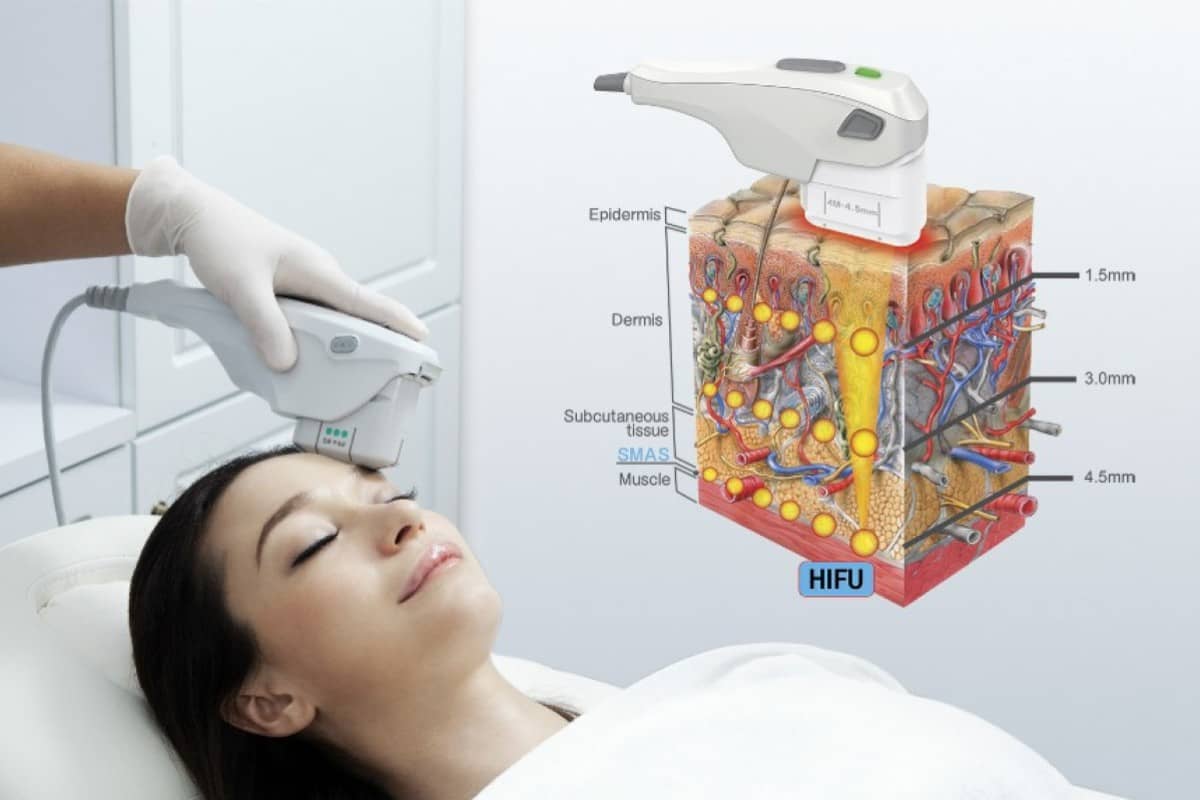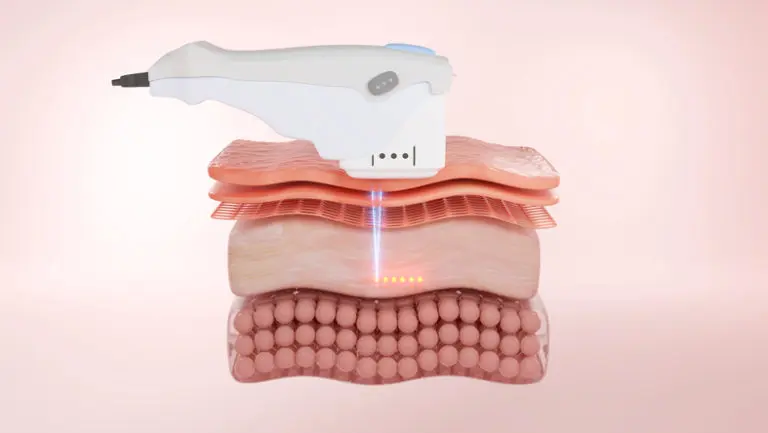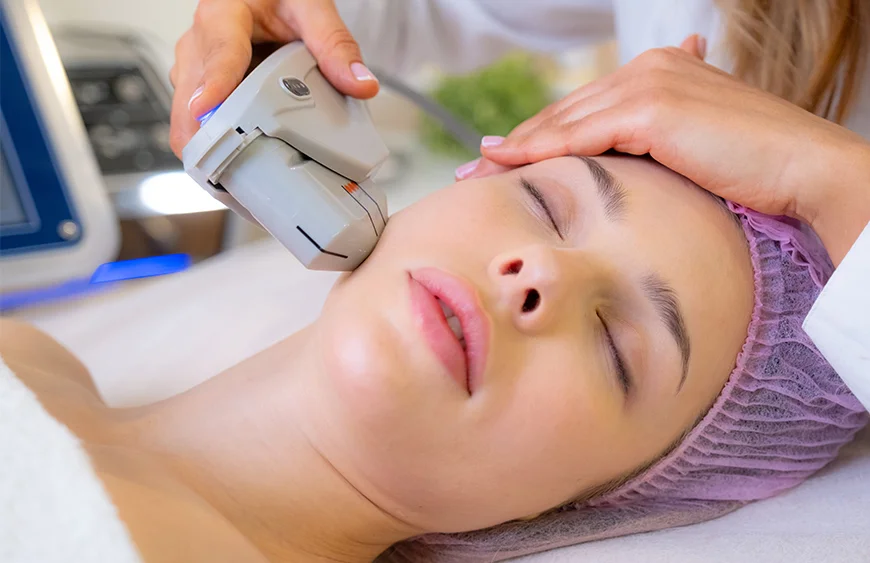18 Jan

HIFU therapy, or High-Intensity Focused Ultrasound, is a non-invasive treatment aimed at improving skin structure and promoting collagen production. In muscles, HIFU therapy may also potentially have a positive impact on the stimulation of collagen synthesis, which may contribute to improved muscle repair and function. However, research into the exact mechanisms and effects of HIFU on muscle tissue and collagen production is still ongoing.
Meer Lezen: Hydrofacial is een essentiele huidverzorgingsroutine
HIFU therapy can not only improve skin but also contribute to muscle health by stimulating collagen production. The process can lead to improved muscle recovery and functionality, which can be especially helpful for athletes or people recovering from injuries. The treatment is non-invasive and targets specific areas, making it attractive to those seeking a quick and effective solution. Further studies are needed to understand the full scope of benefits and long-term effects.
Lees Meer: Cupping Warme Massage: Een Verdiepende Ervaring voor Ontspanning en Welzijn
What are the possible side effects of HIFU therapy.
HIFU therapy is generally safe, but as with any treatment, side effects can occur. Possible side effects include temporary redness, swelling, and sensitivity in the treated areas. Some people may also experience mild pain or discomfort during or after treatment. It is important to discuss these side effects with a health care provider before beginning treatment.
Are there any specific contraindications to HIFU therapy?
Yes, there are specific contraindications to HIFU therapy. Individuals with active skin infections, open wounds, or skin cancer in the treated area are often advised against undergoing HIFU.
In addition, people with certain medical conditions, such as severe cardiovascular disease, or who wear a pacemaker, may also be ineligible. It is crucial to have a thorough medical evaluation before beginning treatment.
Lees Meer: Bloedzuigertherapie / Hirudo Therapie
How is eligibility for HIFU therapy assessed?
Eligibility for HIFU therapy is assessed by a healthcare professional based on a thorough medical history and physical evaluation. This includes discussing any existing medical conditions, allergies, and medications you are taking. In addition, a physician may analyze your skin condition and treatment goal to determine if HIFU is the right choice for you. Sometimes imaging techniques may also be used to better understand the underlying structures.
How many sessions are usually needed for HIFU therapy?
The number of sessions needed for HIFU therapy varies depending on the specific needs of the patient and the area to be treated. In general, a single session is often considered sufficient for most people, but some patients may benefit from additional sessions for optimal results. It is important to discuss this with your healthcare provider, who can advise you based on your unique situation and goals.
Lees Meer: Het winter is beste tijde voor Microneedelig behandeling

How long do the effects of HIFU therapy last?
The effects of HIFU therapy can typically last several months, with many patients seeing results for about 6 to 12 months after treatment.
This depends on several factors, such as the patient’s skin condition, age, and lifestyle. It is important to have realistic expectations and understand that maintenance treatments may be necessary for lasting results.
Lees Meer: Voordelen van Bloedzuigertherapie
What are the best ways to maintain the results of HIFU?
To maintain the results of HIFU therapy, it is important to maintain a healthy lifestyle. This includes a balanced diet rich in antioxidants, adequate hydration, and regular exercise. Using sunscreen to protect the skin from UV rays is essential, as is avoiding smoking and excessive alcohol consumption. Regular follow-up treatments can also help maintain long-term effects.
What are the best products for skin care after HIFU?
After HIFU therapy, there are several skin care products that can help keep skin healthy and hydrated. The use of a mild, hydrating cleanser is recommended, as well as a rich moisturizer to support the skin barrier. In addition, a serum with hyaluronic acid or vitamin C is helpful for hydration and promoting radiant skin. Don’t forget to use sunscreen daily to protect the skin from harmful UV rays.
How can I reduce irritation or redness after HIFU?
To reduce irritation or redness after HIFU, there are a few measures you can take. Use a mild, unscented moisturizer to hydrate and soothe the skin. Cold compresses can help reduce swelling and redness. Avoid harsh skin care products, such as exfoliants or retinoids, in the first few days after treatment. It is also important to protect the skin from the sun by using sunscreen daily.
Lees Meer: Het Wonder van Acupunctuur voor Rug- en Schouder Nekpijnverlichting bij Beauty Clinic Rasa

How long does it take for redness and irritation to disappear?
The duration before redness and irritation disappear after HIFU can vary from person to person, but generally these symptoms can last from a few hours to a few days. In most cases, redness will subside significantly within 2 to 3 days. It is important to take good care of the skin and be patient during the recovery process.
What are the most common misconceptions about HIFU?
There are several misconceptions about HIFU therapy. One common misconception is that HIFU provides immediate results, whereas the effects often become gradually visible over several months. Another misconception is that the treatment is painful; many patients experience only mild discomfort. Also, some people think that HIFU is only for the skin, while it can also have benefits for muscle tissue. Finally, there is a belief that HIFU provides a permanent solution, while maintenance treatments are often needed for lasting results.
What are the benefits of HIFU therapy compared to other treatments?
HIFU therapy offers several advantages over other treatments. First, it is a non-invasive procedure, meaning no surgery or long recovery time is required. Second, HIFU can target deeper layers of skin, which can be more effective in stimulating collagen production compared to superficial treatments. In addition, there are usually fewer side effects and complications compared to invasive options.
Finally, the results of HIFU can be long-lasting, making it an attractive choice for many patients.

How long do the results of HIFU last compared to other treatments?
The results of HIFU therapy can typically last from 6 to 12 months, depending on the patient’s skin condition and lifestyle. Compared to other treatments, such as fillers or botox, which often offer temporary results of a few months to a year, HIFU can have a longer duration before a maintenance treatment is needed. Unlike surgical procedures, which often offer long-term results, HIFU results are less permanent, but with fewer risks and recovery needs.
What are the advantages of HIFU over fillers or botox?
HIFU therapy offers several advantages over fillers or botox. First, HIFU is a non-invasive treatment that stimulates the skin from within by promoting collagen production, resulting in a natural and long-term improvement in skin texture. Unlike fillers or botox, which are temporary solutions and require regular maintenance, HIFU results can last longer and rely less on repeated injections.
In addition, HIFU typically involves fewer side effects and complications, such as swelling or bruising, that often accompany injectable treatments. Finally, HIFU targets deeper layers of skin, which can help improve overall skin quality and firmness.
What results can I expect from HIFU versus fillers or botox?
The results of HIFU therapy focus on improving skin texture and stimulating collagen production, which can lead to tighter and more youthful skin. These results usually come on gradually, often within a few months, and can last 6 to 12 months.
Unlike fillers, which provide immediate volume and plumping effects, and botox, which temporarily reduces wrinkles, the results of HIFU offer a more long-term improvement in overall skin quality. Thus, HIFU is more focused on improving skin texture and firmness, while fillers and botox are aimed at correcting specific wrinkles or volume loss.
Lees Meer: The effect of hot cupping massage on the verlise of body fluids
What are the best combinations of treatments for optimal results?
For optimal results, several treatments can be effectively combined with HIFU therapy. For example, the use of fillers can help address specific areas of volume loss, while HIFU improves overall skin texture.
In addition, botox can be used to reduce dynamic wrinkles, and at the same time, HIFU can tighten the skin. Combining HIFU with chemical peels or microneedling can also help improve skin texture and increase the effectiveness of treatments.
How often can these treatments be combined?
The frequency with which treatments such as HIFU, fillers and botox can be combined depends on the specific treatments and the individual needs of the patient. Generally, HIFU can be repeated once a year, while fillers and botox often need to be refilled every 3 to 6 months.
It is usually advisable to wait at least several weeks between treatments to observe the skin’s response and ensure safe recovery. It is important to schedule this in consultation with a certified health care provider to ensure the best results.
Lees Meer: Eyebrow tweezing is a simple but important and delicate task

